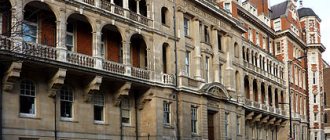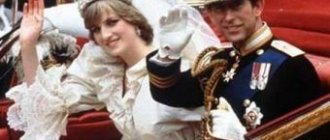The royal tradition in Foggy Albion goes back many hundreds of years.
Hundreds of years of fierce competition, bloody strife and intrigue. But today's royal family - the House of Windsor, established by King George V in 1917 - should be a model of decency and impeccability. Especially a dynasty that has a good half of the globe under its thumb. Just as one does not wash dirty linen in public, squabbles and scandals should not leave the sacred house of Windsor. But in today's information age, keeping secrets is becoming increasingly difficult.
If the English say Skeleton in the closet - they are hinting at some family secret about which it is better not to know anything.
Skeletons in Elizabeth's royal closet
All her life, Queen Elizabeth II has been guarding the reputation of the British monarchy: she has never personally been convicted of treason or crimes against morality, she is always tactful and restrained, she is not haunted by scandals, and today she fully personifies the inaccessibility and sacredness of royal power. The British adore her like their own grandmother, without even questioning her innocence, although we all, of course, understand that she is an ordinary person, with her own weaknesses and secrets, who is simply capable of locking all her “skeletons” deeper in a dark closet .
But, alas, not all members of the British royal family are able, like the monarch, to hide within themselves everything that may not have a very good impact on the reputation of the family. And, despite the fact that the queen herself has never been the protagonist of any scandal, at the instigation of her relatives she constantly has to prevent or resolve another palace force majeure. For the most part, she succeeded, but the press is growing, and the behavior of modern aristocrats is becoming more and more frivolous, so - unfortunately or fortunately - now we finally have the opportunity to find out what Elizabeth herself would prefer never to advertise.
Unfaithful husband

Prince Philip receives guests at the Empress Club, London, 29 December 1951
In the mid-80s, Philip admitted to his biographer Basil Boothroyd that he married Elizabeth not out of love, but out of convenience: “I’m tired of poverty. I never had my own corner. From the age of eight I wandered between schools and ships.”
One must think that Elizabeth guessed that Philip did not love her. But the eldest daughter of the English king was so fascinated by the Greek prince that she did not think too much about the motives that motivated her future husband when marrying.
“He was a stranger from another world,” recalled the Duchess of Marlborough. “That’s what attracted Elizabeth to him.” And, of course, his killer beauty... God, how handsome he was!”
Is the tiara here correct, Light?
To be honest, it was really impossible to resist
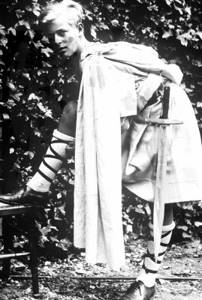
Even now, one look at the Duke of Edinburgh makes it obvious how handsome he was in his youth. Stately, tall, blue-eyed, blond, this naval officer from a noble but impoverished family from the first meeting charmed Princess Lilibet, who from then on never looked in any direction.
Prince Philip was perhaps the only member of the royal family who fully understood Diana's suffering. It is not surprising, because when the British crown fell on the head of young Lilibet, the newly-made Duke of Edinburgh, having abandoned the career of a naval officer, immediately turned into a palace “housewife”: without the authority to make serious decisions, without the usual entertainment and even without the right to give his children his surname . At the dawn of their married life, Elizabeth and Philip even often lived separately, which gave rise to logical speculation about an imminent divorce and... possible infidelity of the king consort to his wife.
It was a difficult time for their marriage. While Elizabeth was busy with palace affairs, her husband spent time in closed men's clubs of dubious nature, and although British newspapers never managed to put sensations about the consort's leisure time on the front pages, the list of his alleged mistresses could easily take up an entire editorial. At one time, it included such people as singer Helen Cordet, actress Pat Kirkwood, TV presenter Katie Boyle, as well as the first beauties of the British aristocracy.
Interesting fact. According to British law, the archives of the royal family must remain secret for no more than 30 years. However, Her Majesty's Secret Service identified 27 separate files from this archive, which were subject to a special parliamentary decision - to keep them secret and out of public access for the next 100 years.
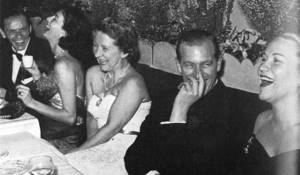
The Duke of Edinburgh and his fans
Most of the files are reports from the British counterintelligence MI5 and Scotland Yard about the personal life of the husband of the English Queen, the Duke of Edinburgh. He was so loving during his stormy youth and even during the years of family life that the leadership of the security and safety services of the British crown decided to constantly monitor Philip around the clock. For fear of leaking information about the Duke’s adventures to the “yellow press” and possible discrediting of the British government.
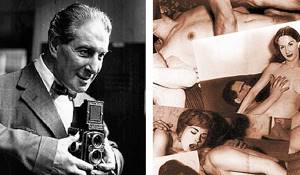
In the late 40s and early 50s, the English aristocracy had a craze for pornography. Strawberry lovers competed to see whose collection was richer and exchanged photographs. The heroes of the photographs were often themselves. Philip also had a significant porn collection. Its creator and custodian was the royal photographer Baron Neyhum. Of course, Elizabeth - in her usual manner - never commented on the rumors surrounding Philip's alleged infidelities. Instead, she spent hours walking around the palace grounds with her husband's uncle and learned from him the intricacies of family life. Elizabeth remembered one of his pieces of advice for the rest of her life.
“Men have needs of a certain nature, but this does not mean that they love their wives less,” Lord Louis Mountbatten once told her, and it seems that since then Elizabeth has looked at the institution of marriage with different eyes.
Sister - rival
Elizabeth II ascended the throne when she was 25 years old - quite a suitable age for a newly-crowned monarch, who by this time should have already become an independent, fully formed personality, open to new experiences.
The new queen really had all the makings to become a talented ruler, however, like any girl, she still had her own complexes.
One of them was then 22 years old and his name was Princess Margaret.

Queen Elizabeth II and her younger sister Princess Margaret at the Tivoli Theater in London for the opening ceremony of the Italian Film Festival, 1954
Margaret was often called the “spare princess”, since the girl had practically no chance of taking the British throne.
But she didn't seem to care much. Yes, she didn’t have a crown, but she had something that the queen herself could envy: incredible beauty, youth, the status of the most stylish woman on the planet and the opportunity to go to parties. She attracted men to her like a magnet...
Margaret was always smiling and cheerful and, returning from another party in a fashionable dress, perhaps no, no, but aroused banal girlish envy in the queen.
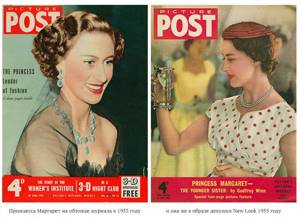
First heiress and then Queen and head of the Church of England, Elizabeth clearly understood the responsibility and honor of her status. But when you are in your early twenties, even if you are a monarch, sometimes you also want carefree youthful fun.
Yes, the relationship between the sisters was never simple, but already in the first year of Her Majesty’s reign they had to undergo a real test of strength. Elizabeth married the handsome Prince Philip at the age of 21 - Margaret was already 22, and she was completely overcome by dreams of a wedding dress. Moreover, there was a suitable candidate - Captain Peter Townsenden, with whom the princess had been in a romantic relationship since the age of 16.
In her youth, Princess Margaret fell madly in love with the famous pilot, war hero, Captain Peter Townsend. Margot was exceptionally beautiful. Peter also fell in love with the princess. But he was divorced. And not famous. The rules of the House of Windsor then in force did not allow them to marry. Only the young queen, with her power as the head of the Anglican Church, could break the Gordian knot and arrange Margarita’s family happiness. But Elizabeth II did not agree to this, despite the desperate requests and pleas of her younger sister. The Queen showed excessive integrity in defending the useless and long-outdated rules for the marriage of royalty in Great Britain.
The young man was not of royal blood, but still, being a hero of the Battle of Britain, he remained a welcome guest of the royal court (at one time he was even held especially highly by King George VI), so in general their union could have taken place if not for one “but”: Peter was divorced and had several children, which automatically canceled out any chances of him marrying a royal person.
Margaret was subjected to very powerful pressure both from the Anglican Church and from the Cabinet of Ministers in the person of Winston Churchill. The 22-year-old princess was led to believe that she was committing a terrible sin against the Crown and the Church by continuing a relationship with a divorced man and dreaming of marriage with him. Of course, Elizabeth could reform the laws in accordance with modern trends (all over the world, divorce was already becoming a household procedure) and allow her younger sister to marry for love. But she did not do this, and, presumably, the long-term rivalry of the two sisters played a role here.

Princess Margaret
Instead, the princess’s lover was removed out of sight - first to the Queen Mother’s estate, and then completely sent out of the country, to Brussels, as a person liable for military service. The intrigue continued until the princess's 25th birthday - the age when she could already disobey the Queen and, renouncing her title and privileges, like her uncle once did, go down the aisle with her beloved man. However, unexpectedly for the public (who sympathized with the suffering of the princess), Margaret made an official statement in which she renounced her beloved, declaring her duty to her family and society. This is how Elizabeth’s younger sister broke down for the first time.

Princess Margaret returns to London after a weekend out of town. She made a statement that she would not marry divorced Peter Townsenden, October 17, 1955
Soon the girl left London for dubious trips around Europe and meeting not the most respected people. She was distinguished by a special love for closed clubs, tobacco and whiskey, for which she soon received the reputation of a real “headache” for Elizabeth. In 1959, she received news that Peter Townsenden was getting married, and the very next day she accepted the proposal of a photographer from a poor Welsh family, Anthony Armstrong-Jones. At least this one was not divorced, and besides, Elizabeth already dreamed of finding a home for her wild younger sister, so she hastened to bless her choice. Margaret and Anthony had a magnificent royal wedding, but fairytale love never happened.

Newlyweds on the balcony of Buckingham Palace. Queen Elizabeth II is wearing a turquoise outfit on the right in the photo. Between her and the Queen Mother stands young Prince Charles. May 6, 1960
The “rebellious” princess quickly returned to her previous way of life, and 18 years later she filed for divorce (here Anglican laws were powerless).

Princess Margaret and Anthony Armstrong Jones, April 23, 1960
She died at 72, an unhappy woman confined to a wheelchair. Of course, we are all the creators of our own destiny, but who knows - maybe if Elizabeth had shown sisterly love for her younger sister, allowing her to marry for love, this story would have had a much happier ending?
Top topics:
The Duke and Duchess of Sussex, Prince Harry and his wife Meghan Markle, have announced their retirement from the British royal family and plans to achieve financial independence.
Thus, according to media reports, Queen Elizabeth II and Prince Charles were furious when they learned about the decision of the Dukes of Sussex thanks to television: Megan and Harry did not inform the royal family about their plans. OBOZREVATEL found out what led to the split in the British royal family and why Prince Harry and Meghan Markle decided to leave it.
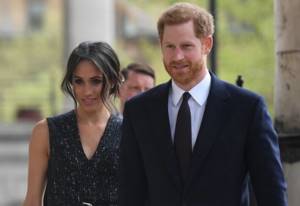
How Markle “stole” Harry from Elizabeth: the story of the conflict DR
The Dukes of Sussex announced their decision to step down as senior members of the British royal family and achieve financial independence on January 8 on Instagram.
According to a statement from Elizabeth II's grandson and daughter-in-law, they intend to play a "new, progressive role" while fully supporting the Queen.
At the same time, Queen Elizabeth II herself, according to media reports, was furious with this decision, since she did not even know about Megan and Harry’s plans. According to the Daily Mail, "Queen Elizabeth II is deeply saddened" and "Prince Charles of Wales and Duke William of Cambridge are incandescent with rage."
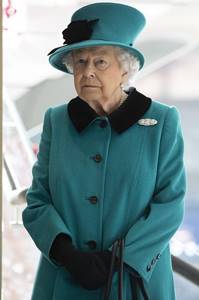
How Markle “stole” Harry from Elizabeth: the story of the Getty conflict
Let us note that earlier the press has repeatedly written that Prince Harry and his wife are under pressure both from journalists and from the royal family.
Thus, in December, Meghan Markle topped the rating of “the most unfairly criticized people in 2020”; she was named the most bullied person in Britain. The American ex-actress began to be criticized in the media since her wedding with Prince Harry. The race of Markle, whose mother is African-American, has become one of the reasons for criticism.
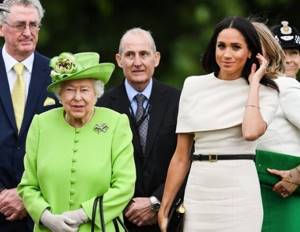
How Markle “stole” Harry from Elizabeth: the story of the Getty conflict
It also later became known that Elizabeth II removed the photo of Harry and Meghan from the table in her audience office at Buckingham Palace. This fact was noticed by journalists during a personal meeting of the monarch with the High Commissioner of Grenada, Kisha Alexander-Grant - the image was replaced with a joint photo of Prince Harry and Prince William.
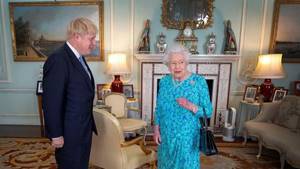
July 2020 Getty
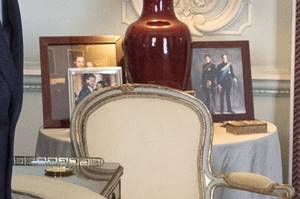
July 2020 Getty
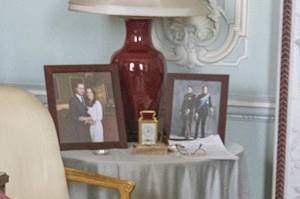
October 2019 Getty
The media tried to explain this situation by the fact that earlier in the ITV documentary Meghan and Markle spoke about the difficulties of life under close public attention. In particular, the Duchess complained that a lot of negative materials were published about her in the British media, and every woman feels vulnerable, especially if she is pregnant.
The royal family expressed dissatisfaction with this behavior of the queen's grandson and his wife.
In addition, according to media reports, the discord in the royal family is evidenced by the fact that Prince Harry, his wife and son Archie spent the Christmas holidays in Canada.
Also, even after Megan and Harry’s wedding, the press wrote about the conflict that occurred between the queen and her daughter-in-law over the wedding tiara. So, on the day of her wedding to Prince Harry, Meghan wore an Art Deco tiara with diamonds, which was lent to the prince’s chosen one by Queen Elizabeth II. But, according to media reports, Megan wanted to wear a completely different rare piece - a tiara with emeralds, but received an answer that she could not wear it to the wedding.
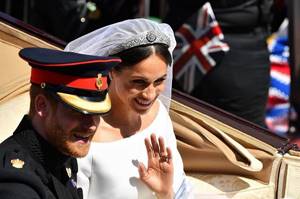
How Markle “stole” Harry from Elizabeth: the story of the Getty conflict
“There was a very heated argument that forced the Queen to talk to Prince Harry. Elizabeth II said Meghan can't have everything she wants. After all, she is the one giving her the decoration. Her Majesty also wondered why Meghan needed a veil, given that her marriage to Harry is her second,” The Sun wrote in 2020, citing an insider.
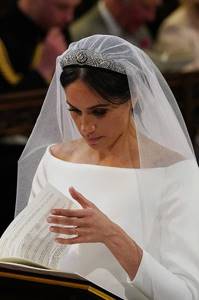
How Markle “stole” Harry from Elizabeth: the story of the Getty conflict
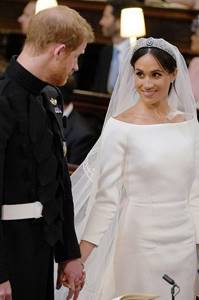
How Markle “stole” Harry from Elizabeth: the story of the Getty conflict
And reporter Robert Jobson wrote in his book that Prince Harry told his assistants shortly before the wedding: “What Meghan wants is what she gets.” But, judging by this case, not all of the Duchess’s wishes are feasible.
The conflict between Elizabeth II and Meghan Markle was preceded by many other troubles. So, for example, journalists previously wrote that, for example, the word “pregnant,” which the Duchess of Sussex often used, is considered vulgar by the Queen, and the wedge shoes that Meghan wears are not at all to Elizabeth’s taste.
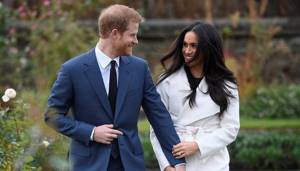
How Markle “stole” Harry from Elizabeth: a history of the conflict ukrinform.ua
However, according to rumors, the main “bone of discord” in the relationship between the Queen and the Duchess was allegedly the father of Prince Harry’s wife. According to the insider, Elizabeth II, in her experience, initially wanted to avoid publicity of the conflict between Meghan and Thomas: “She was concerned that the situation had gotten out of control. Buckingham Palace planned to intervene in the situation. The Queen even gave instructions to the courtiers, but Kensington Palace had its own opinion - the Duchess thought she could handle it on her own.”
Meghan Markle's wayward character led to some tension in relations with the Queen, but Buckingham Palace then decided not to intervene.
As OBOZREVATEL reported:
- On May 6, 2020, Prince Harry and Meghan Markle gave birth to a son. The prince immediately commented on the event.
- The child became seventh in line to the British throne and will receive the title of Lord Sussex.
How are things going with Nastya and Potap - read on our Instagram!
Homosexual relatives

Edward VIII with his cousin Louis Mountbatten
At the beginning of the 20th century, free morals confidently captured the whole world and, as usual, penetrated even into the strongholds of morality and morality - and the British royal family was no exception.
At that time in Great Britain homosexual relations were prosecuted by law, however, this did not stop some of its high-ranking members from having affairs with people of the same sex, and even allowing themselves not to care that this information could become public knowledge.
At this time, closed men's clubs (including for homosexuals) appeared on the streets of London like mushrooms after rain. Among the clients of such establishments were the best representatives of the intelligentsia, politicians and, of course, aristocrats. One of these visitors was the son of King George V, Prince George, Duke of Kent (Uncle of Elizabeth II).
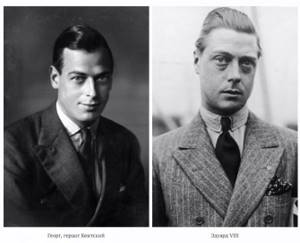
Moreover, in addition to his brother, among George’s alleged lovers before and after his wedding to Marina, Princess of Greece and Denmark, there were such people as playwright Noel Coward, chansonnier Florence Mills and even the Prussian prince Louis Ferdinand and the Soviet spy Anthony Blunt.
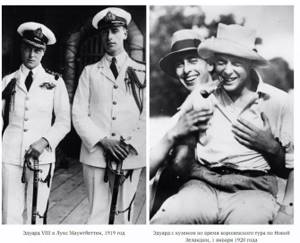
As for Edward VIII - think about it, he was the first contender for the British throne!
Edward with father George V, Queen Victoria and King Edward VII
And in addition to connections with his younger brother, he was also close to his cousin Louis Mountbatten (the uncle of Elizabeth’s husband - the same Dickie who taught the queen marital tolerance). The latter, in turn, although he was married, also had controversial acquaintances with Noel Coward and Peter Murphy, the leader of the English homosexual movement in those years.
For these men, their wives were an important cover for the people, but it seems that within the royal family the true preferences of some of its members were well known.
Today, homosexuality (especially bi) is something that will surprise few people: the most famous artists, public figures and even politicians admit to it. But for royal families, whose “ideality” should not be subjected to the slightest doubt, unconventional relationships are unacceptable - and are still unacceptable. Otherwise, the monarch, as the guardian of morality and ethics, risks simply being overthrown. So, perhaps, if the connections of Elizabeth’s uncles had been widely publicized at one time, then today the president would be at the head of the Commonwealth (and even more likely, there would be no Commonwealth at all).

Edward VIII with his cousin Louis Mountbatten on a royal tour to Australia
Skeletons in the closet: secrets of famous families
There are many secrets and mysteries in our world, but some of them are hidden especially carefully. Most often those associated with rich and influential families. It’s clear that anyone can make a mistake, but how can one erase one’s mistake from world history?...
Bushy
Even before they became famous presidents of all America and started choking on bagels, the Bush family supported the Nazis during World War II. George W. Bush's grandfather, Senator Prescott Bush, headed the United Banking Corporation of the United States. True, her assets were arrested in 1942 for “trading with the enemy.”
But until that moment, the OBK represented in the States the interests of Fritz Thyssen, the steel and coal baron who sponsored Adolf Hitler’s election campaign in the 30s. And, although grandfather Bush himself never publicly expressed his sympathy for the Nazis, he was, of course, well aware of the affairs that the OBC was conducting with Nazi Germany and its individuals.
There is even a theory that Prescott Bush and several other very influential characters wanted to surrender the United States to Adolf.
Rockefellers
If anyone has skeletons in their closet that not only don’t fit, but actually fall out of there, it’s, of course, the Rockefeller family. Let's start with the fact that the founder of the clan, William Rockefeller, in his youth earned extra money by selling... uh... what is now called dietary supplements, but proudly called them “remedies for cancer, dropsy and other diseases.”
He didn’t just sell, but did what any traveling salesman-swindler would do - he walked from door to door across the American outback and sold fakes to housewives. Having saved a couple of hundred, he married the young lady Eliza and gave birth to John D. Rockefeller, a world-famous billionaire and financier, and then William Jr., who together with his brother organized Standard Oil. True, he later ran away from the family and once again married a girl 25 years younger than him. True, he never divorced Eliza. That is, he was, in fact, a bigamist.
Well, so what, you say, you never know who once was - children are not responsible for their fathers. OK. Then you, of course, know that the above-mentioned brothers and their descendants earned their fortune exclusively from wars. John D. sold grain and meat to the United Army during the Civil War at inflated, speculative prices. The money he earned was invested in the oil refinery of Samuel Andrews, which marked the beginning of the aforementioned Standard Oil.
But having greatly expanded its influence by the 30s of the 20th century, the Rockefeller company successfully invested in the German chemical concert IGFarben, which produced... well, yes... the famous Zyklon B, a cyanide pesticide that was incredibly popular in Nazi concentration camps.
Windsors
As you know, it is better not to meddle in the affairs of the Royal Family of Great Britain. And then suddenly you get into an accident, fall ill with an incurable disease, or simply commit suicide. We swam, we know.
But there is something that, no matter how hard they want to hide it, somehow comes out. For example, it seems to be no secret to anyone that King Edward VIII, who left the throne in 1938 to marry the twice-divorced American socialist Wallis Simpson, was a friend of Hitler. Moreover, he kissed him so passionately that at the end of the Second World War, he chose to flee to the Bahamas, away from sin and the Nuremberg Tribunal.
But what are we all about fascists and fascists? The meaning of all mysteries and secrets is not in them alone (however, just as it is not in the obviously ordered murder of Princess Diana). The Queen Mother had even more terrible secrets - Nerissa and Katherine Bowes-Lyons, her own nieces (and, accordingly, cousins of the reigning Elizabeth II), who in 1941, for unnamed medical reasons, were placed in a madhouse. One young lady was 22, the second was 15.
The girls were considered a "trouble" for the royal family due to poor learning abilities and some other unmentioned facts, and were simply hidden. They were forgotten, officially recorded as dead in the Book of Royal and Titled Families of Great Britain.
The secret was revealed only after Nerissa's death in 1986. According to rumors, Katerina is still alive. The BBC even made a documentary about them. But don't look, it's no longer online.
Schwarzeneggers
Well, a little more about the fascists. The father of the world-famous Terminator, Gustav, according to documents published in 2003, was the chief of the Austrian police and voluntarily joined the Nazi Party in March 1938, even before Austria was “annexed” to Germany, and this became a mandatory point. And in 1940 he became a member of the Sturmabteilung - Nazi stormtroopers.
Despite all of the above, Arnie was lucky - no documents were found that Gustav was accused of war crimes and was put on trial. Otherwise, his career would have failed. And not only political...
Churchill
Winston Churchill had a brother, Jack, who, by the way, was never mentioned in his autobiography. Well, that is, except for the phrase “the other boy.” Why was Churchill so eager to erase any mention of his younger brother from his and all people’s memory?
Historians say there is only one reason for this - Jack was an illegitimate child. According to biographers of the great Prime Minister, Jack is the result of an affair between Lady Randolph Churchill and Ewlyn Boscawen, 7th Viscount Falmouth.
But even this is not all - if Winston could have been born out of nowhere, he would have been much happier, because then he would not have had to mention his mother at all - after the Viscount, she became the mistress and kept woman of the Prince of Wales.
Rothschilds
And now we get to another very rich family. The Rothschilds... they say they are closely connected with the secret organization of the Illuminati (almost the same as the Masons, but more powerful). Logically, all family secrets must be protected, and its members must behave impeccably. At least in public. But bad luck - the first daughter of Charles Rothschild, Baroness Pannonica "Nika" de Koenigswarten did not fit into the prosperous family of billionaires at all.
She loved jazz very much. Very. And she loved jazzmen too. Very. You just have to remember what those years were like back then, and that jazz was played by African Americans. Meanwhile, Nika managed to have affairs with all the significant names in jazz music. For example, with Charlie Parker (who was suddenly later found dead in her hotel room.
If they even thought about Nika’s relatives who might have been involved in the death of the great saxophonist, they didn’t say it out loud). Her second lover was pianist Thelonious Monk. They were later detained for smoking marijuana, but Nika took all the blame upon herself, and Monk did not go to prison. As, indeed, Nika herself. She's Rothschild - who's going to jail her?
source
Uncle is a Nazi protégé
“I abdicate because I do not find it possible to fulfill the duties of king without the help and support of the woman I love,” these words of King Edward VIII, who had been on the throne for just over ten months, shook Great Britain. He abandoned his people for the sake of a divorced commoner, and even with a dubious reputation, whose list of lovers was supposed to include the most senior public figures, artists and politicians. Including the Nazis.

Edward VIII with his American lover Wallis Simson
It was the 1930s. Germany, under the leadership of Adolf Hitler, gradually got rid of the shackles of the Versailles Peace and became a country attractive for investment and joint international projects. State leaders around the world sought to get to know the new leadership of the Third Reich better, but the most persistent among them was the heir to the British throne, Prince Edward, who after the First World War, for political reasons, although he could not pay visits to Berlin, still regularly communicated with pro-Nazis in Europe, holding the arm of his beloved Wallis Simpson. This is what attracted Hitler's attention.

The mutual favor of Edward and Hitler, even if at a distance, only grew stronger, which at first even pleased the royal house. But the approval was short-lived, because it is one thing to be friends with the National Socialists, and another to admire and become like them.
As a stronghold of British conservatism, the royal family could not afford a left-leaning heir. What then awaits her in the future? The answer was obvious: accusations of betrayal of tradition, attacks by Labor and, ultimately, overthrow.
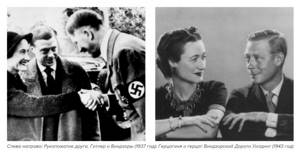
But then King Edward made his historic statement of abdication. Now it seemed that the problem was about to resolve itself.
But it was not resolved. Even after his scandalous marriage to Wallis in 1937, the newly minted Duke and Duchess of Windsor not only did not abandon their friendship with European pro-Nazis, but even allowed themselves to pay a visit to the Third Reich, where they personally met Adolf Hitler and his inner circle ( which, of course, caused another big scandal in London). Wallis was not a hunter for the Crown, but still, through connections with the Nazis, she secretly dreamed of returning her husband to the throne, and Hitler, in turn, was not averse to getting himself a puppet king at the head of Great Britain.
For Germany, having “its” person in Buckingham Palace became a strategic task, because after Edward’s abdication the balance of power changed radically. Especially in the presence of Prime Minister Churchill, who initially saw a potential threat in the Hitler regime.

Edward VIII displays the Nazi salute during an unofficial visit to Germany, 1937
Already in our time it became known how far the negotiations between the traitor Windsor and Hitler went. The Fuhrer promised to restore him to the throne after the victory over Britain. Edward told Hitler a number of British state secrets.
When World War II began, the former king, also known as the Duke of Windsor, received the rank of major general and the task of communicating with the armed forces of allied France. This cost both the French and the British dearly. In a report to the German ambassador in The Hague, Edward said that the Allies were expecting a Wehrmacht invasion of France through Belgium, where they were concentrating their forces. Upon learning of this, Hitler changed the direction of the main attack and attacked with 50 divisions through the weakly defended Ardennes. France surrendered after just six weeks. A springboard was obtained for Luftwaffe actions against Great Britain and a possible landing of the German army on the British Isles. The betrayal of the Duke of Windsor sharply changed the course of the Second World War - clearly not in favor of London. She worked for the Nazis and his husband.
The complete set of documents taken by Blunt from Germany is still a secret of the royal court of Windsor.
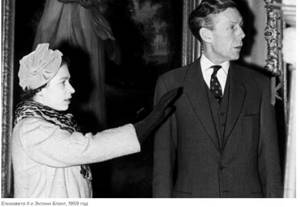
In 1947, Blunt, on behalf of the king, went to the Dutch Queen Wilhelmina to remove from the archives documents compromising the House of Windsor. During the German occupation of Holland, the son of Kaiser Wilhelm II, Friedrich Wilhelm, and his English wife Cecile lived there. Hitler's correspondence with Edward also took place through this couple.
For completing such a “delicate assignment,” Blunt received the Order of Queen Victoria and the Prince of Nassau of Orange.
When the British counterintelligence MI5 learned in 1940 about the Germans' preparation of Operation Willie to remove Edward from Portugal to Berlin, where he was to conclude a separate peace on behalf of Great Britain, the British immediately exiled him as governor to the Bahamas until the end of the war. Churchill even gave instructions to eliminate Edward if evacuation was impossible.
Thus, Elizabeth’s father, King George VI, protected the royal family from “leftist” sentiments, and along with them, from Labor members’ reasons to attack the weakened spirit of the British monarchy. Since then, Edward and Wallis no longer got involved in politics, exchanging their ambitions for simple human happiness.

Two daughters-in-law with broken destinies
It would seem that the story of her sister’s broken heart should have taught Elizabeth to take a different approach to the marriage of her relatives. However, even at the age of 60, the queen stubbornly refused to give her loved ones freedom in choosing spouses.

Lady Diana Spencer and Camilla Parker Bowles
In the late 70s, Elizabeth even denied her eldest son Charles the right to marry for love - for the same reasons as Princess Margaret: her son’s chosen one was “wrong”, from the point of view of the monarchy.
At the time of the wedding of the century - Charles and Diana Spencer, the prince's romance with Camilla Parker had already lasted nine years. The young people loved each other, but the Queen Mother did not give Charles permission for this marriage.
As a result, the prince’s beloved married Andrew Parker Bowles, and the heir to the British Crown, who was very upset by this fact, out of despair married 20-year-old Lady Diana Spencer, with whom he had nothing in common.

Wedding of Camilla Shanad and Andrew Parker Bowles
Elizabeth was against letting a girl with the character of Camilla into her family, but she considered it a good idea to make her daughter-in-law a young aristocrat who had grown up reading romance novels and had not yet seen real life at all.
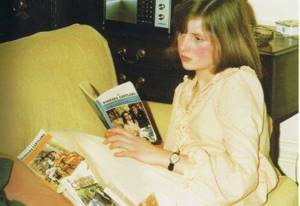
please - photo of Diana with books
beloved mother-in-law
The Queen chose Diana for Charles as his wife, which doomed herself, her son, and Camilla to misfortune. Parker married a womanizer and rake Andrew Parker-Bowles, who, with his constant affairs, opened the way for her to retaliate. She cheated on her husband, of course, with Charles. Diana knew about this whole story, but she could not force Camilla out of her husband’s heart.
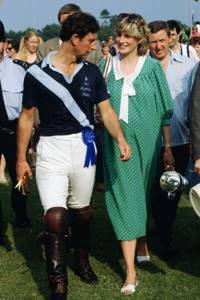
practically a fatal woman Charles
The years passed, Diana gradually grew older, but the lack of love and understanding turned her not into a wise and self-sufficient woman, but into an embittered and abandoned captive of her own status.
Tears for Charles gave way to hatred: she also began to respond to his betrayal with betrayals and, contrary to royal protocol, began to behave... just like Princess Margaret (except without alcohol and visiting dubious places).
When marrying the Prince of Wales, Diana, of course, knew about his love affair, but apparently hoped to oust Camilla from her husband’s heart. When the princess realized that this was impossible, she began to desperately take revenge.
In total, according to Lady Di's biographers, she had five official lovers and about eight unofficial ones. Apparently, in order to prick her husband more painfully, Diana chose the most unexpected candidates as partners. In 1985-1986, she was in a close relationship with her bodyguard Barry Mannaki.

Barry Mannaki and Diana as spectators at a polo game, 1985
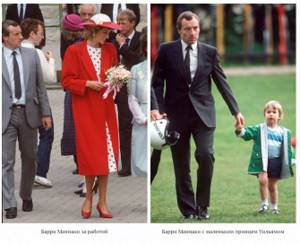
At the same time, for a long time no one knew how serious the feelings that the princess had for her subordinate were. In 1991, when a fragment of a frank interview was leaked to the press, the whole world learned that she was seriously considering leaving everything (including her sons) to run away with her lover.
It is unknown how long all this would have lasted if one day a recording of a telephone conversation between Charles and his mistress, where the couple communicated more than frivolously, had not accidentally leaked to the press. It was a terrible blow to the reputation, after which it was pointless to maintain the appearance of an idyll between the prince and his wife Diana.
This story finally convinced Diana that there could be no talk of any idyll in her family. And she started talking. More precisely, tell “your true story” (and, by the way, not without the help of friends), the culmination of which occurred on November 24, 1995, when the princess gave a scandalous interview to the BBC.
Needless to say, permission for divorce from the queen (regardless of her principles) followed immediately.
Diana was released from the cage, but no one could “fix” her broken soul. By the age of 36, the woman had never learned to love and lived exclusively by her trips to society and communication with the press. The whole world felt sincerely sorry for the Princess of Wales, and after her tragic death in Paris, people's love for Diana and hatred for the Windsors grew even stronger.
The prince wanted a divorce so he could finally be reunited with the woman he loved, but Diana's death in 1997 pushed them away again, as people perceived Camilla as a destroyer of the family. Only in 2000 did Charles officially introduce his beloved to his mother, and in 2005, after a 35-year romance, the couple got married
But in the end, for this death of Diana, it was not Elizabeth, and not even Charles, who got it, but... Camilla Parker Bowles. It was in her that the million-strong army of Diana’s fans saw the main reason for the death of the people’s princess. Camilla was subjected to real persecution, her house was besieged by photographers and journalists, she was bombarded with threatening letters, and was greeted with hooting on the street. For a long time, Camilla retained the popular title of “the most hated woman in Great Britain.” What it was like for her to live with this stigma - only she knows

Elizabeth II admitted her mistake only almost 30 years later, allowing Charles and Camilla to officially link their destinies in 2005. She was almost 58, he was 56. Such a deadly long and thorny road to family happiness (which the Queen herself spoke about at their wedding). 12 years have passed since their marriage, and all this time the Duchess of Cornwall has been regularly fulfilling all royal duties and “bribing” ordinary Britons with her sincere love for the future king.
I really like this couple

But all this was with her many years ago.
Super scandal in Britain: Princess Diana's records of betrayal and murder have been published
World
A national scale scandal occurred in Britain. It happened after British television on Sunday evening, August 6, showed the documentary “Diana: In Her Own Words.” And the real reasons for Diana’s death, which have long been whispered about in corners, are gradually acquiring new details.
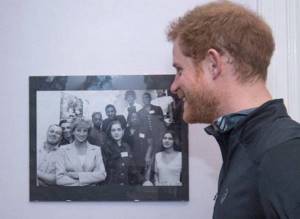
Photo: AP
For the first time, Her Majesty’s subjects saw video recordings made by Peter Settelen, the princess’s speech and public speaking tutor. Before the release of the film, a noisy campaign began in the press, and members of the royal family tried to ban the screening of this film, saying that there was no need to “exploit the bright image of the people’s princess.”
However, the film “Diana: In Her Own Words” was still aired 25 days before the 20th anniversary of the tragic death of the princess.
What did viewers see in the footage shot by Settelen? At the very first meeting, which took place in September 1992, the tutor turned on the video camera, but instead of “a few words about herself,” the princess suddenly began to open up about the most intimate moments of her marriage.
She talked about Charles’s “clumsiness” during their courtship, and that in the early years of their marriage they had sex only once every three weeks. And in the last seven years, her husband stopped sharing a bed with her altogether and spent his free time with his mistress Camilla Parker-Bowles.
Diana also told Setteluna about her true love - married bodyguard Barry Manaka. However, soon after their meeting, Manaki was transferred to another place of work, and three weeks later he crashed to death on his motorcycle. According to Diana, “everything was revealed and then they killed him.”
According to Settelen, Diana had one goal: while planning a divorce from the prince, she rehearsed her speeches in front of journalists. That is, the princess rehearsed all the accusations against Charles and Queen Elizabeth until the end of 1993, and after another three years, in 1996, the couple finally divorced.
While Diana was alive, the video recordings made were kept in her house, but after her death they suddenly disappeared. A few years later they showed up at Lady Di's butler. After a long trial, which recognized Settelen's right to the recordings, they were sold to Channel 4.
The documentary film shown by the channel again touched on the most painful topics. For example, about a series of princess lovers. And this casts doubt on Charles’s paternity: do William and Harry really have royal blood in their veins?
Suspicions of the faked death of Barry Manaka again reminded us that the car accident in which Diana died was not so simple either. Half-forgotten questions have become relevant again, as has the version that the royal family dealt with Diana in order to prevent her marriage to a Muslim.
The official version of the car accident took shape only in 2007, after a series of trials. The driver of the car, who had alcohol in his blood, was identified as the culprit.
All the conspiracy theories surrounding Diana's death had one weak link: the conspirators' lack of motive. Even the fact that in her interviews the ex-wife of the heir to the throne brought out all the dirty laundry of the royal family only added to the popularity of the House of Windsor, who became participants in an endless soap opera that was followed by the whole world.
In terms of scandal, Prince Charles was perhaps not inferior to Diana, even without hiding his long-term relationship with the married Camilla Parker Bowles and naturally did not care about public opinion. And in general, the English monarchy has experienced more serious scandals, and the love affairs of members of the royal family are legendary.
However, literally on the eve of the airing of the film “In Your Own Words,” The Sun newspaper announced that it had at its disposal another 12 hours of video recordings made by Lady Di shortly before her death. From these tapes it follows that the former princess had serious plans for the English throne: in one of the tapes, Diana makes an unexpected admission that she is “ready to do anything to prevent Charles from becoming king.”
The cameraman later wrote in his diary: Diana plans to enthrone her eldest son, Prince William, after the death of Queen Elizabeth. And this better explains Diana’s eccentric behavior.
The beautiful princess managed to please the public. She dressed well, behaved democratically and simply, but what especially captivated the people was how the wife of the heir to the throne complains in her numerous interviews about her hard life: her husband cheats, her mother-in-law despises her, tears flow like a river. In short, “the rich cry too.” So Diana became “Cinderella, bullied by the royal family.”
At the same time, at the instigation of Diana, scandals flared up, the most terrible of which was “Camila-gate,” which began after a recording of a very indecent telephone conversation between the prince and his mistress was leaked to the press.
Shortly before this, the Sun newspaper published the same wiretap of Diana - she was talking with her lover James Gilbey. He called her affectionate nicknames, and she complained that she was afraid of pregnancy.
Having ridiculed Charles, the public easily forgave Diana. She was also a style icon and the “queen of hearts.”
By the end of their marriage, Charles was completely compromised and Diana looked like an innocent victim. After the divorce, the princess tried to denigrate the royal family even more.
And if Diana really had an insidious plan to seize the throne, then everything looks very logical, and the conspiracy version of her death seems less extravagant.
scandal
Father and uncle are financial swindlers
Issues of financing the royal court in Great Britain have always been particularly acute, but Buckingham Palace has managed to smooth them out every time. Today, Britons pay just 61 pence a year out of their own pockets to the Queen, while the Queen herself regularly pays taxes on profits from her private estates - sums amounting to hundreds of thousands of pounds sterling.
The Queen is not obliged to do this: she pays all taxes voluntarily, paying tribute to a tradition born during the reign of Queen Victoria. However, this was not always the case.

Since the 1990s, Elizabeth has revived the tradition of donating part of her income to the state treasury
In Great Britain, only the monarch and his spouse have the right not to pay tax on private property; the remaining members of the royal family are required to contribute part of their money to the state treasury.
However, not everyone wanted to share part of their wealth with the state. And we are not talking about representatives of godforsaken families. None other than the Queen's uncle Edward VIII, who, by law, was required to regularly pay income tax from his county of Cornwall, failed to fulfill his royal duty.
Elizabeth’s father did not do this in his youth (before becoming King). The two brothers were involved in illegal financial fraud, which was then covered up by the Chancellor of the Exchequer. Their scheme was extremely simple: the brothers sent the required amount to the appropriate department, which noted that the princes had conscientiously fulfilled their duty to the state. However, not even a few months passed before some not entirely conscientious officials simply returned the entire amount to the heirs (of course, minus their own remuneration), which later went into the “shadow”.
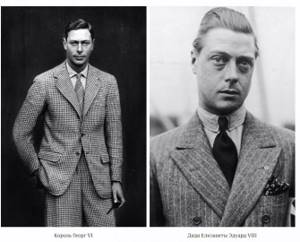
Was it really necessary for such wealthy aristocrats to evade taxes in this way? I think it was just a kind of thirst for extreme sports. But, be that as it may, this is a very serious crime, which could well cost George the Crown. However, the royal family managed to hide the incident for almost a hundred years, and his daughter still rules the United Kingdom.
Wallis Simpson and Edward VIII
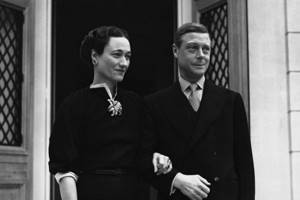
At one time, the monarch refused to rule the state for the sake of love with a simple girl. Moreover, the lady was married, so the couple was condemned for a long time. Edward himself repeatedly stated that he found it impossible to fulfill his royal duties without the help of his beloved woman. The news that the king refused to rule the country for the sake of a woman who had 2 unsuccessful marriages excited the whole of Great Britain.





